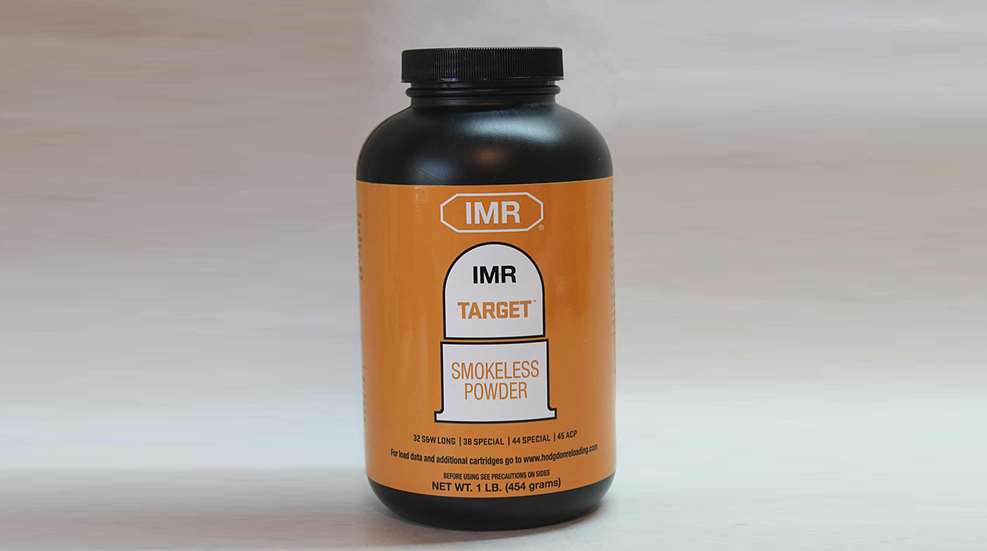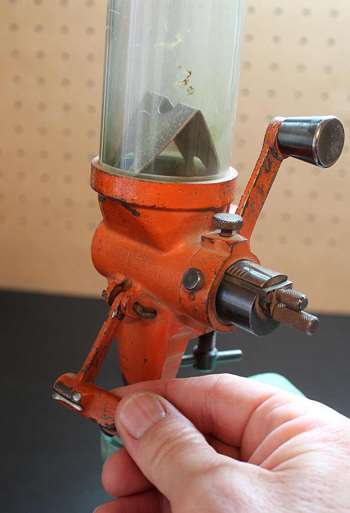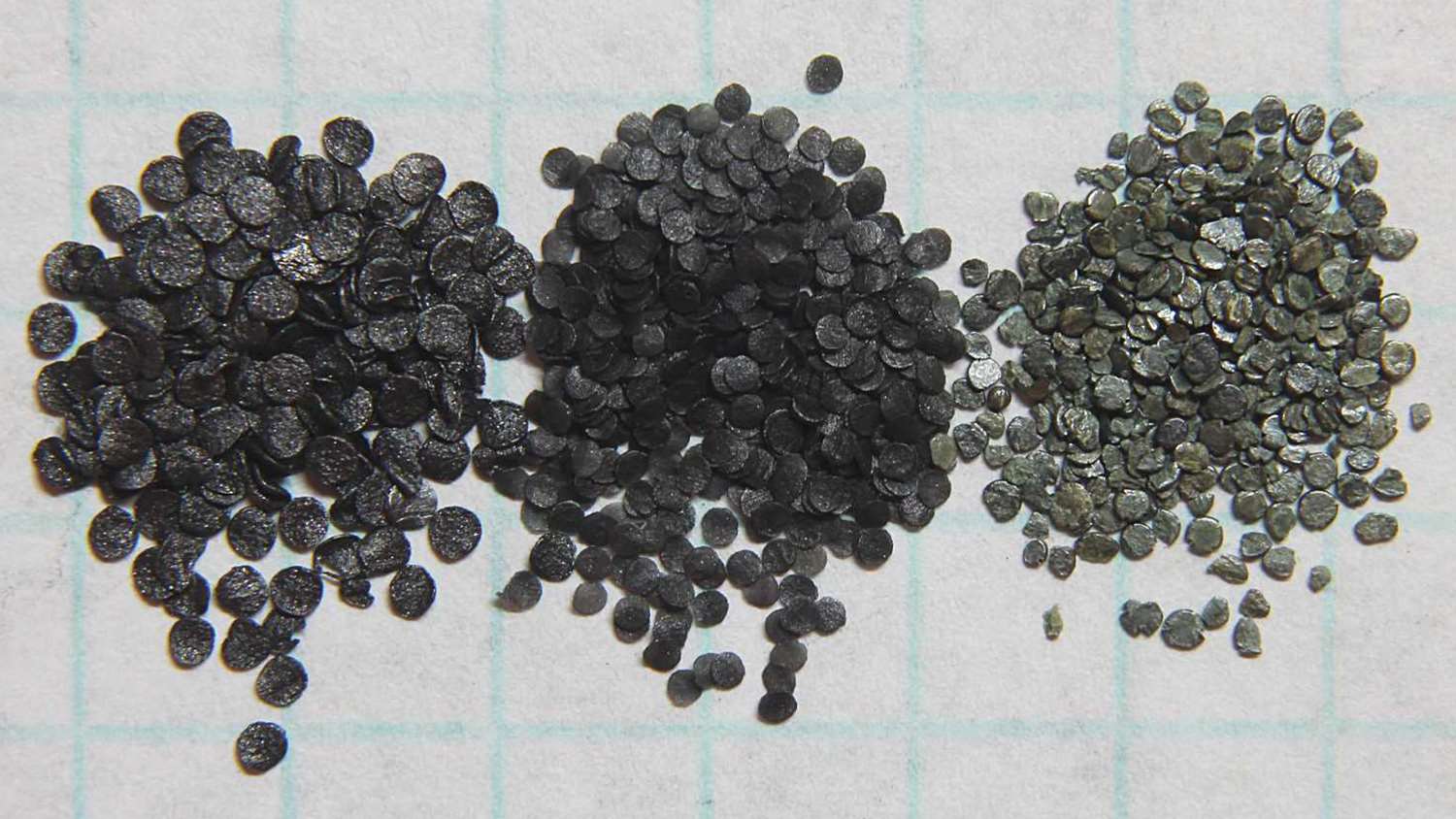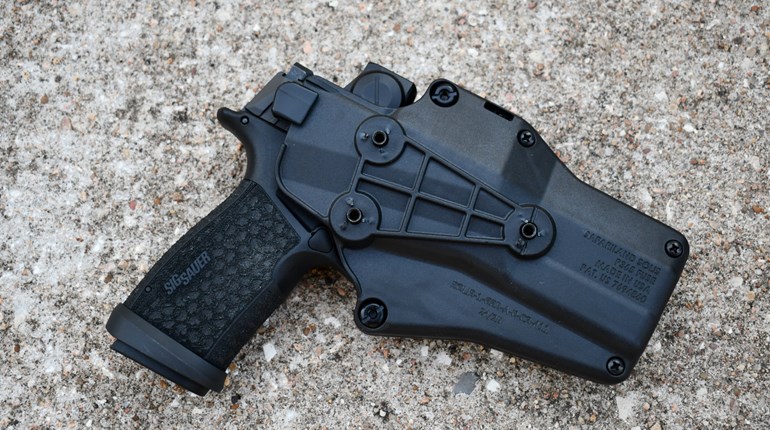
It’s a good bet you’ve heard the phrase, “Better living through chemistry.” It’s actually a contraction of, “Better things for better living … through chemistry,” an advertising slogan coined by DuPont, which, coincidentally, was the maker of IMR smokeless powders at the time of coinage. For handloaders, chemistry continues to bring us better and better powders, though DuPont’s IMRs have now passed into the hands of the Hodgdon Powder Company.
Among the latest IMR powders is one Hodgdon calls, “Target,” intended for pistol cartridges in the .38 Special/9mm/.45 ACP class. Anything new is, supposedly, an improvement over whatever is already extant, so what’s the deal with IMR Target?
“IMR Target is a very consistent, fine grained, small flake powder that meters superbly,” Chris Hodgdon said when I asked him IMR Target’s claim to fame. “Compared to Brand X, you’ll find it flows beautifully and is very clean burning.”
While that may seem, at first blush, a bit obtuse regarding the “target” moniker—the remark does indeed address target precision potential in a smokeless pistol powder.
No Hang-Ups
At the loading bench, smooth flow through a powder measure probably tops the “most wanted” list of powder characteristics for most handloaders. Reloading pistol cartridges is very often synonymous with high volume; that is, reloading a lot of cartridges per sitting, as we’ll typically burn through hundreds of rounds in a single competition or plinking session with friends. Trickling and weighing every charge would be tedious unto death—and is not an option when reloading on a progressive press—and so we routinely throw charges into pistol cases without weighing them.

This practice makes smooth flow through a powder measure critically important. If pistol powder clumps or otherwise hangs up in a measure, one case will be short of a full charge, while the next may get a full charge plus whatever part of the previous charge was hung up in the measure. Either situation is detrimental to grouping shots closely together—and could ruin your day. And while handloaders sometimes blame a powder for hanging up, the problem is often a function of the powder measure itself and is not unheard of with new brand new powder measures.
A lot of handloaders never heard of “seasoning” a new powder measure by running a pound or so of powder through it. The theory is that the graphite coating on the powder granules (and in the dust at the bottom of a can of powder) comes off a bit to act as a lubricant for the interior surfaces of the measure to prevent powder sticking. Some old style powder measures feature a “knocker,” rather like a miniature door knocker, that helps assure a complete powder dump with a flick of the finger. Many powder measures, such as made by Redding, still include a baffle at the bottom of the reservoir, the purpose of which is to prevent powder clumping caused by the weight of the powder on top of the column compressing the powder below.
All that finger-pointing at the powder measure aside, there’s no doubt that a pistol powder’s physical characteristics are also important to smooth metering. Powder granules with rough surfaces, for example, would tend to cling to each other to cause clumping. Whether or not a graphite coating acts as a lubricant, the coating does afford a smooth surface; rounding the edges of the granules can’t help but to enhance the granules’ proclivity to not stick together or to the powder measure. The result is smooth metering, which itself results in consistent charge weights—thus promoting precision shooting.

Flake powders intended for pistol cartridges have their flat shape because the physical characteristic is conducive to the desired performance, especially a very fast burn rate. Many handloaders will agree that the flat sides of flake powder granules are sometimes wont to hang together or delay their departure from a powder measure; on the flip side, we notice that ball powders tend to flow almost like water and produce consistent weights. What IMR Target appears to accomplish, then, is to bring us a flake powder performance with a ball powder’s slick metering. Manufacturing the individual flakes to uniform size and shape, combined with smooth metering, can’t help but produce shot-to-shot consistent loads.
At the range or in the field, of course, we’re looking for best precision. We get that from (among other things) consistent bullet velocities. Consistent powder charges are a requirement for that, and there’s our connection between, “flows beautifully” and the “Target” in “IMR Target.”
Bench Objectivity
Is IMR Target really capable of target precision greater than Brand X and therefore worthy of the name? To test that empirically, we’ll need a comparative evaluation of perhaps 1,000 handloaded rounds for an adequate data sampling. Because different manufacturers make their pistol cases with slightly different inner dimensions, we must use cases of all the same make and same lot number, trimmed to the same length and individually weighed in order to assure consistent volume in all the test cases because Boyle’s Law says different case volume will result in different pressure and therefore different bullet velocities, subsequently opening groups on the target. Consistent bullet seating depth is another requirement, as any variation would also vary case volume. Of course, those must be match quality bullets to ensure bullet lengths are as precise as possible, for the same reason. We’ll have to ream those 1,000 primer pockets to uniform depth and bevel flash holes for consistent case-to-case ignition. And, of course, we must utilize a Ransom Rest to eliminate human error in sighting and firing the pistol, and shoot over a chronograph to record velocities for comparative analyses.
I didn’t do any of that.
What I did do was adjust an RCBS Uniflow powder measure to throw 3.6 grains of IMR Target, and then threw and weighed 50 charges on an electronic scale accurate to +/- 0.1 grain. Of those, 44 charges weighed 3.5 to 3.7 grains; taking into account the scale’s tolerance, we can consider those spot-on. Six of the charges weighed 3.4 grains. That tenth of a grain difference may be due to several factors―powder, scale, powder measure, my technique―but in the larger scheme of reloading pistol cartridges and the manner in which we usually shoot them, it rates as excellent consistency. Tapping the measure over a piece of white paper after each charging showed no powder sticking to the measure.
That pretty much concluded objective reloading bench testing, leaving the fun part: mostly objective shooting tests.
Range Time
For that, I loaded 50 rounds of .38 Special into R-P cases (all from the same box, my tip of the hat to at least some case consistency) and fired them through Old Reliable, a Smith & Wesson Model 10 M&P revolver. On a chart of smokeless powder comparative burn rates, IMR Target walks arm-in-arm with Bullseye and 700-X. Hodgdon’s online Load Center lists loads for the new powder, and ballparked commercial cast 138-grain LSWC bullets between a 130-grain lead bullet load of 3.5 to 4.8 grains of Target, and a 140-grain lead bullet load of 3.6 to 4.5 grains of said powder. I elected to load 3.6 grains of Target with Winchester Small Pistol primers to light it off.
The results of five 10-shot strings fired over a chronograph worked out like this: Average velocity: 728.6 fps, with a low of 750.6 and a high of 831.7. That doesn’t tell us much; more informative is the average extreme spread (ES) of 50.62 and average standard deviation (SD) of 16.48. The latter especially interests us because it is our best indicator of consistency―the lower the number, the more consistent the shot-to-shot performance, and that equates to precision (accuracy). ES and SD both indicate differences in bullet velocities, but while ES is the average difference between only the slowest and the fastest bullet fired over the chronograph, SD takes into account the variance of all the individual shot velocities in the string, so it’s more precise.
The SD recorded here is quite good, and I’ll note that one 10-shot string turned in an SD of only 11.04. I’ve gotten better SDs with match rifle cartridge handloads, but for a small quantity of powder that takes up little volume in a straight walled pistol case like the .38 Special―cases that lacked any match tuning and launching cast lead bullets―it appears that IMR Target will do its job, leaving us to focus on the case, bullet and primer aspects of working up an accurate load.
As for claims to clean burning, well, that’s a subjective analysis, and mine offered here is that IMR Target is certainly not as dirty as some other powders. But I still have to clean the Model 10, and chemistry will undoubtedly make for better living in that regard, as well.


































